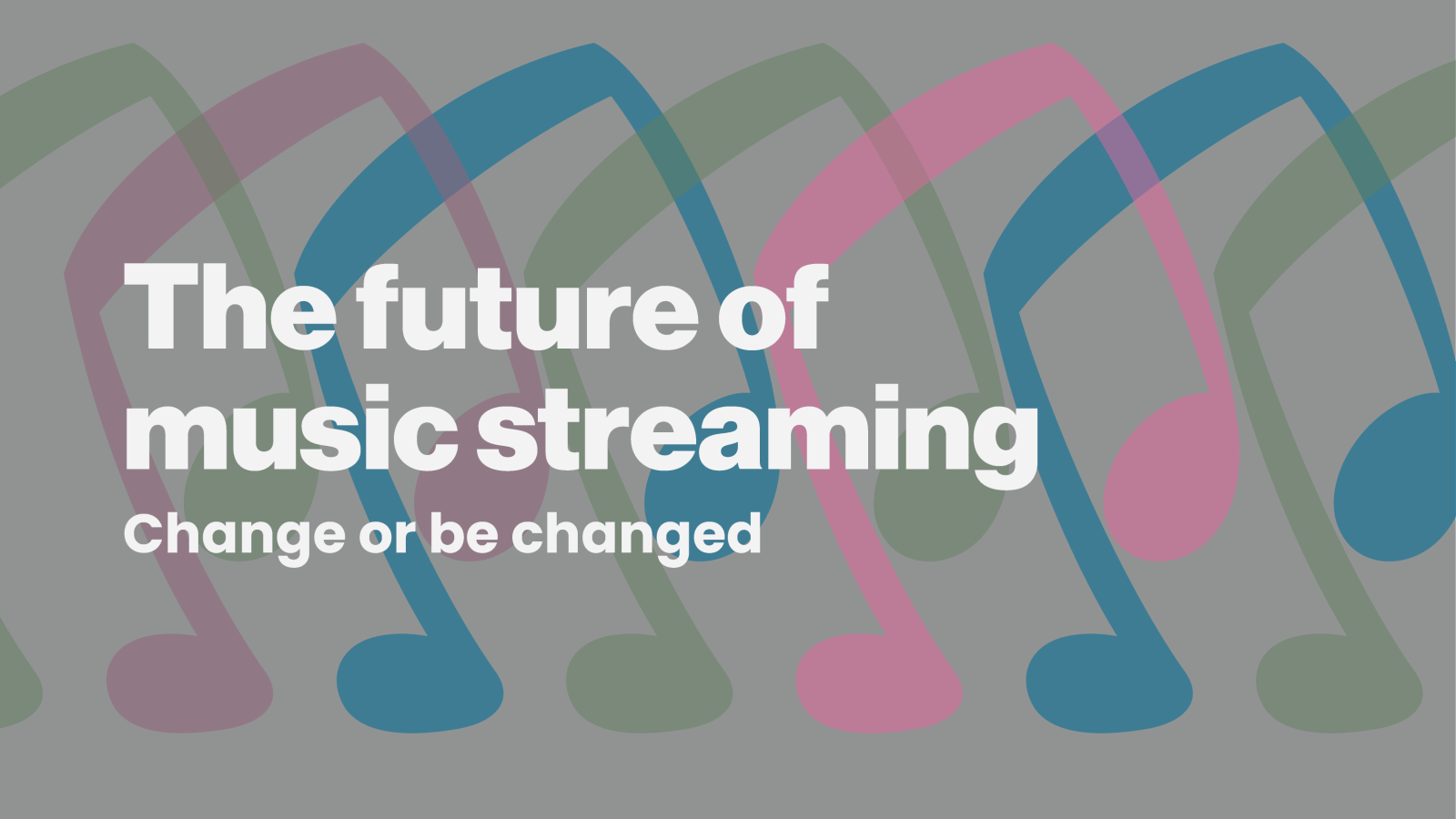Future Of Music Streaming: ‘A Change is Gonna Come’ [MIDiA]
As part of their ‘Future of…’ series, analysts at MIDiA look at the Future of Music Streaming “to map bold visions of what the future could, and more importantly, should look like” — because to quote the late great Sam Cooke, “a change is gonna come.”

by Mark Mulligan from the MIDiA blog
The Future of Music Streaming
The music business, entertainment as a whole – even the world – are at turning points. The future may be unknown, but there is always one certainty: things are going to be different. The change that got us here was paradoxically both fast and slow. Slow enough that we didn’t notice it happening, yet fast enough that our lives are dramatically different from just ten years ago. Dramatic change requires dramatic solutions – what got us here won’t get us there.
To this end, MIDiA is producing a ‘Future of…’ report series that uses today’s change catalysts to map bold visions of what the future could, and more importantly, should look like. We are excited to announce the first of these reports: The future of music streaming: Change or be changed. While the ideas and recommendations are MIDiA’s own, we stress-tested them through background interviews with the CEOs and heads of all the leading global music streaming companies. Here is a preview of our findings.
The case for change
The music industry is in a good place – possibly too good a place. With streaming economics now mature and stabilised, rightsholders and DSPs alike have shifted to cruise control. Meanwhile, external investment has flooded into rights, attracted by stable economics and growth potential. Financialisation and optimisation have become the defining market forces. Most importantly, consumers are enjoying the most powerful and convenient music proposition that has ever existed. Yet it is the nature of this business that just when you think you finally have things figured out, the ground starts to shift once again. Beneath streaming’s calm surface, strong currents of change are churning. Among them:
- Social video is competing with music streaming time – and among 16-19-year-olds, it is winning
- 10% of consumers would cancel their streaming subscription if prices continue to rise
- New generations are not connecting music artists to their identities in the same way millennials and older generations did
- 67% of independent labels believe it is harder now to build artist careers due to the growing volume of songs
- The rise of generative AI is bringing concerns over volume to a fever pitch, with 60 million active users of gen AI music apps in 2024
So, why fix a problem that in many ways, does not yet exist? The answer is simple: waiting until it is a problem will be too late. It was optimisation instead of innovation that set the recorded music business up for a fall in the late ‘90s. Back then, the CD was the dominant format, and post-boom growth was pursued via price increases rather than innovation. Sound familiar?
[Featured Report – Streaming strongholds: High-potential markets for global music players. While the balance of music streamers continues to tip towards global south markets, their smaller ARPU rates limit their revenues. Meanwhile, periodic price-rises and the advent of supremium will reinforce the contributions from the West. This report highlights streaming strongholds, those markets which, underscored by high music engagement… Find out more…]
The catalysts for change
The evolution of music formats has progressively flattened the music listening experience, collapsing context and seeing convenience consistently trump entertainment. There are many more passive music consumers than aficionados, so it is little wonder that as streaming mainstreamed, it optimised for the passive massive more than superfans. It is time for friction to be introduced.
Chinese streaming apps show us the way, not only putting friction ahead of convenience, but productising it. Chinese streaming users lean in and do things to get the most out of their experience. Crucially, there is a clear effort / reward equation underpinning this. Record labels’ growing focus on fandom is let down by streaming because fandom did not catch the streaming bus in the West. China is the Sliding Doors view, showing us things can be different. Streaming UX needs to lean into friction, making music fun, not simply convenient.

The BEATS innovation framework
In the report, we map the opportunities and introduce our BEATS innovation framework that reflects five aspects of the traditional music business that have a case for reintroduction (for more on this framework, check out our new Future of music streaming page).
Of them all, setting rate limits is both the most important and the most controversial. The democratisation of music distribution was crucial but brought a tidal wave of unintended consequences – not least, the existential challenge of cutting through the clutter. Today’s system is not working, and it will only get worse as generative AI music fills the passive playlists listeners depend upon to navigate the bewildering over-supply of music. Labels, distributors, and DSPs alike need to work together to create different lanes for music and to manage the supply of music with human-led curation.
In the report we explain how each DSP should lean into its unique characteristics to build genuine market differentiation, as well as a series of industry-wide recommendations such as membership clubs and user-led curation. There is simply so much in the report; a blog post like this can only scratch the surface. We are incredibly proud of this piece of work and are confident that it is a must read for anyone in the music industry. MIDiA clients can read the report right now. If you are not yet a MIDiA client and would like to learn more about this report, check out our Future of music streaming page.
Want the latest entertainment research and insights directly to your inbox? MIDiA’s newsletter has you covered, click here to subscribe.